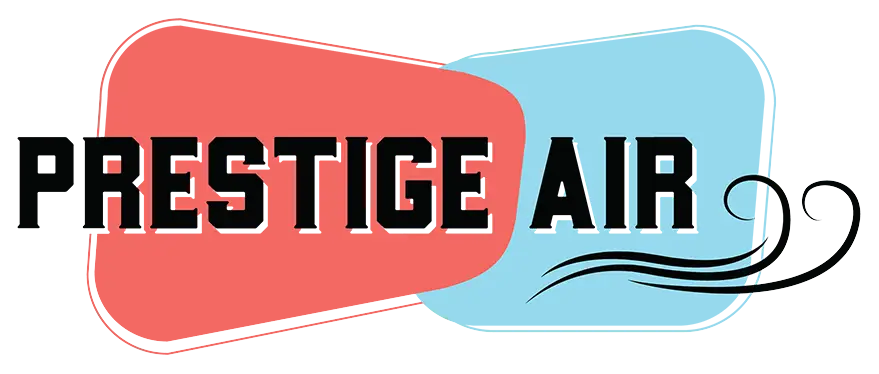
These days it’s starting to get pretty cold and more and more of us are turning on our heaters. Here in Texas you probably have one of three types of heaters, a gas furnace, electric heat, or a heat pump.
In this post I’m going to review the sequence of operations for a gas-fired furnace, and the types of components you’ll find to make it operate correctly.
When you set your thermostat to “heat” and the temp in your home gets below the temperature you have set for your heater the thermostat sends a call for heat to your furnace. This kicks off the sequence of operations to start up your furnace and make sure that it burns safely and heats your home.
Step 1:
The first thing that happens when your system gets a call for heat is that the inducer motor turns on. This is a small motor that creates a draft inside the heat exchanger so that all the products of combustion (once the gas lights on fire and starts to burn) get evacuated to the outdoors.
Step 2:
Connected to the inducer motor is the pressure switch. This switch proves to the furnace control board that the inducer motor is operating correctly and removing the products of combustion.
Step 3:
Once the pressure switch proves the draft to the control board then we move on to step three, the hot surface ignitor turns on. This is a metal rod that gets hot and glows red to ignite the gas once it turns on. The hot surface ignitor turns on and glows red for 5-15 seconds to make sure it’s good and hot.
Step 4:
Once the ignitor is hot the control board then turns on the gas. This is done via the gas valve. The gas valve takes the incoming gas from your home supply and reduces the pressure a bit so it burns as designed. It also regulates if the gas flows to the burners or not. Once the gas valve gets the signal it opens and flows gas through the burners. Once the gas hits the hot surface ignitor it lights and begins to burn.
The Heat Exchanger

The heat exchanger is the device that holds the flames, gets hot, and that air blows across to heat up and then circulate through your home. The heat exchanger is essentially a collection of tubes. The fire burns into the tubes at one end, and at the other end the tubes connect to your furnace vent so the products of combustion exit the home. You don’t want these getting into your house. These tubes get hot from the fire burning inside them, then the blower pushes air across them which heats up the air before it circulates through your home.
Step 5:
Step 5 is the flame sensor. This sensor is another metal rod that sits right in the path of the flame and lets the control board know that a fire is burning. The purpose of the flame sensor is to tell the gas valve to turn off if no flame is detected. This way, if the ignitor is bad and the gas valve turns on but no flame lights, the furnace knows to turn off the gas rather than just keep it flowing. If the gas didn’t turn off you could have a really bad scenario with major life-safety implications.
Step 6:
Once the flame sensor proves to the control board that a flame is present it starts a timer that counts down to turn on the blower motor and circulate air. Your furnace will wait until the heat exchanger gets hot before it turns on the blower, this is the purpose of the timer. This prevents the blower from circulating cold air through your home when the heater first comes on. By waiting, the heat exchanger gets hot, and when the blower motor comes on it circulates hot air from the start.
Once the blower turns on your heater is operating as designed and will run until the temperature at your thermostat hits the set-point. But there are still two other safety’s in the furnace to protect you and your family in case of failure.
Roll-out Sensor
The roll-out sensor sits inside the burner compartment and will shut off the furnace if the flames don’t stay directed into the heat exchanger channels. This can happen for a variety of reasons, like if your draft vent gets clogged and the products of combustion cannot exit the heat exchanger, or if the gas valve fails to regulate the pressure correctly, and on and on. The flame roll-out sensors shut down the gas valve so that the flames don’t lick out and start a fire in the furnace compartment.
High-limit Switch
The high limit switch exists to shut down the gas valve if the temperature inside the heat exchanger gets too high. This can happen if step 6 fails, and the blower never turns on. Without air from the blower motor blowing across the heat exchanger it can overheat, melt, and start a fire. To prevent this the high-limit switch will shut the furnace off if the temperature gets too high. You can read more about high-limit switches here.
Diagnosing
This is a short summary of how your furnace works.
When your furnace doesn’t operate correctly it could be any number of issues in the above sequence of operation. That’s why it is important to have your system cleaned and maintained twice a year, and if it does have an issue, to call a licensed professional to repair it.
Choose Prestige Air to Keep Your HVAC Running Optimally
If you experience problems with your heating and cooling call Prestige Air. Our expert service professionals have the training and experience to keep your HVAC system in tip-top shape all year long. Call (817) 200-7215 to make sure your heating and cooling are ready for the season!
Prestige Air proudly serves Northeast Tarrant County and the Fort Worth, Texas area including Hurst, Euless, Bedford, Colleyville, Grapevine, Southlake, Keller, Watauga, Haltom City, and North Richland Hills.
We look forward to serving you and your household!

